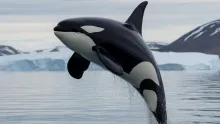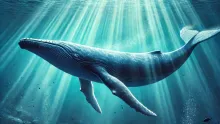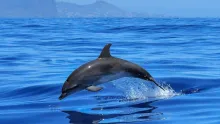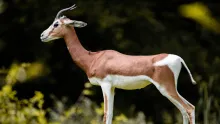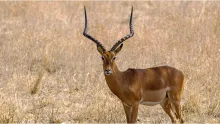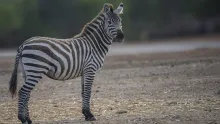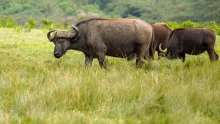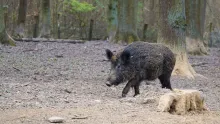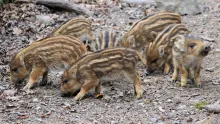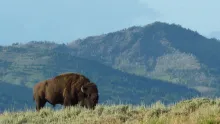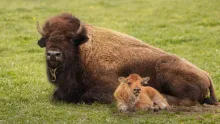Skip to main content
About Orca Whales
Introduction
- The Orca Whale (Orcinus orca), also known as the Killer Whale, is the largest member of the dolphin family (Delphinidae).
- They are known for their intelligence, social behavior, and striking black-and-white coloration.
- Orcas are apex predators, found in oceans worldwide, from the Arctic to the Antarctic.
Physical Characteristics
- Orcas have a robust, streamlined body, with males reaching le
About Blue Whales
Introduction
- The Blue Whale (Balaenoptera musculus) is the largest animal ever known to have existed on Earth.
- They are marine mammals and belong to the baleen whale family, known for their filter-feeding mechanism.
- Blue Whales are found in oceans worldwide, from the Arctic to the Antarctic.
Physical Characteristics
- Blue Whales have a massive, streamlined body, with lengths reaching up to 100 feet (30 meters)
About Dolphins
Introduction
- Dolphins are highly intelligent marine mammals belonging to the family Delphinidae.
- They are known for their playful behavior, social nature, and advanced communication skills.
- Dolphins are found in oceans and seas worldwide, as well as in some freshwater rivers.
Physical Characteristics
- Dolphins have a streamlined, torpedo-shaped body adapted for fast swimming, with lengths ranging from 4 to 30 feet (1.2 to 9 meters)
General Information
- The Gazelle is a species of antelope known for its graceful appearance and speed.
- Gazelles belong to the Bovidae family and the Antilopinae subfamily.
- They are primarily found in Africa, the Middle East, and parts of Asia.
- Gazelles are known for their ability to run at high speeds and perform quick, agile movements.
- There are over 19 species of gazelles, including the
General Information
- The Impala (Aepyceros melampus) is a medium-sized antelope native to Africa.
- They are commonly found in the savannas, woodlands, and grasslands of eastern and southern Africa.
- Impalas are known for their graceful appearance and incredible agility.
- They are an essential part of the ecosystem, serving as prey for many large predators.
- The name “Impala” comes from the Zulu language, mean
General Information
- The Zebra is a wild equine native to Africa and is closely related to horses and donkeys.
- They are best known for their distinct black-and-white striped coats, which serve as camouflage.
- There are three main species of zebra: Plains Zebra (Equus quagga), Mountain Zebra (Equus zebra), and Grevy’s Zebra (Equus grevyi).
- Zebras are herbivores that primarily feed on grasses but also eat leaves an
General Information
- The Water Buffalo (Bubalus bubalis) is a large domesticated bovine found in Asia, Africa, and parts of Europe.
- It is one of the most important livestock animals, providing milk, meat, and labor to millions of people.
- There are two main types: the Swamp Buffalo and the River Buffalo, each adapted to different environments.
- Wild populations, known as Wild Water Buffalo (Bubalus arnee), are endangered and primarily foun
Introduction
- The African Cape Buffalo (Syncerus caffer) is one of the most formidable and dangerous animals in Africa.
- They are known for their large, robust bodies, curved horns, and unpredictable behavior.
- Cape Buffalos are part of the Big Five and are highly respected by hunters and wildlife enthusiasts.
Physical Characteristics
- Cape Buffalos have a massive, stocky body, with males weighing between 1,100 to 2,200 pounds (500 to 1,000
General Information
- The Wild Boar (Sus scrofa) is a species of wild pig native to Europe, Asia, and North Africa.
- It is the ancestor of the domestic pig, which was domesticated thousands of years ago.
- Wild boars are known for their tough and aggressive nature.
- They are highly adaptable and can live in forests, grasslands, wetlands, and agricultural areas.
- Wild boars are considered an invasive species in some regions due to their rapid re
General Information
- The Bison is a large, herbivorous mammal native to North America and Europe.
- There are two main species: the American bison (Bison bison) and the European bison (Bison bonasus).
- Bison are often mistakenly called buffalo, but true buffalo are found in Africa and Asia.
- They are known for their massive size, shaggy coats, and curved horns.
- The American bison is the largest land mammal in North A
